
The hip abduction machine primarily targets the “abductor muscles,” encompassing muscles such as the glutes (minimus, medius, and maximus), tensor fasciae latae, piriformis, and sartorius.1
All of these muscles work in sync to help move the leg away from the body and many think hip abduction exercises are the secret to a big butt, but since the glute medius inserts above the waist line, they’re actually the “worst exercise possible” if a large buttocks and thin waist is desired.
However, there’s still some cases where hip abduction can be beneficial and they can help grow the glutes too, but it all depends on an individuals goals.
In addition to showing every muscle worked, the benefits and cons of hip abduction machines, alternatives, and exercises that offer more functionality, we’ll also review the hip abduction machine muscles worked, the difference between hip abduction vs. hip adduction, and when to use each.
Do Hip Abduction Machines Make Your Hips, Butt & Thighs Wider or Smaller?
The hip abductions are the primary muscle group targeted by the abduction machine, and are located on the lateral (outside) side of the body. Many people can use this machine thinking it can help to create a bigger buttocks while shrinking the waist, but that isn’t always the case.
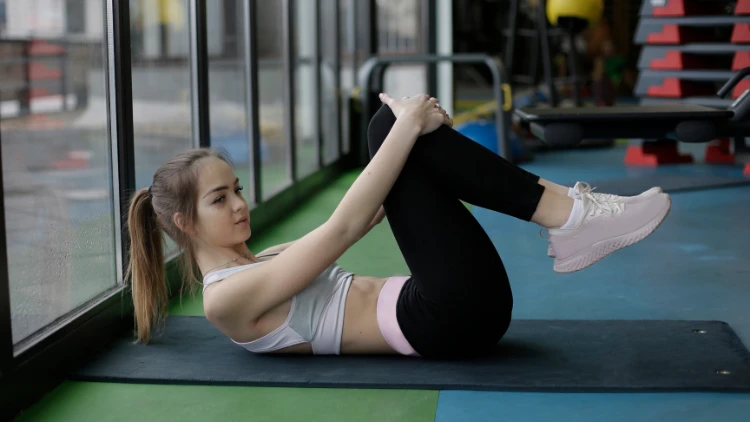
Source: Andrea Piacquadio via Canva.com2
In fact, this machine can lead to the appearance of thicker thighs and a thicker waist, causing the opposite physique that a curvy physique seekers might be trying to obtain. Furthermore, it can affect the tensor fascia latae making it one of the worst exercises to use!
Keep reading for alternatives to the hip abduction machine that builds a better buttocks. Keep in mind that protein is essential for muscle growth, so consider trying protein shakes diet plans to ensure you’re consuming enough protein!
Targeted Muscles in the Hip Abduction Machine
The hip abductions are the name for a group of muscles that are responsible for hip abduction. Or more simply put, moving the leg away from the body at the hip joint.
When it comes to abduction, there are actually two groups called primary and secondary adductors. The primary being responsible for the movement, and the secondary supporting the movement.
Check out below for a more detailed explanation of hip abduction machine muscles worked, as well as anatomically correct diagrams.
The Glutes (Gluteus Medius, Gluteus Minimus)
The abductor machine for glutes will technically target all three muscles, but the gluteus medius and minimus muscles are the primary muscles responsible for hip abduction. They are directly responsible for moving the leg away from the midline of the body and are very engaged during machine hip abduction.
Readers should know research has found that different abduction exercises will target the various glute muscle activation per muscle, and should be considered when adding an exercise to a routine.3
Gluteus Medius
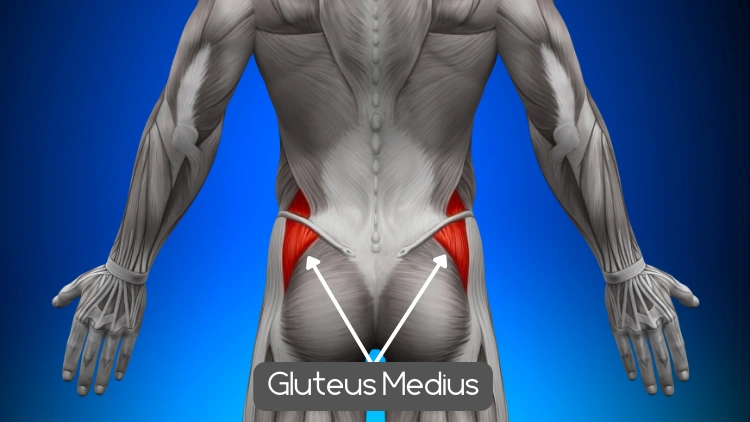
Source: decade3d via Canva.com4
Gluteus Minimus
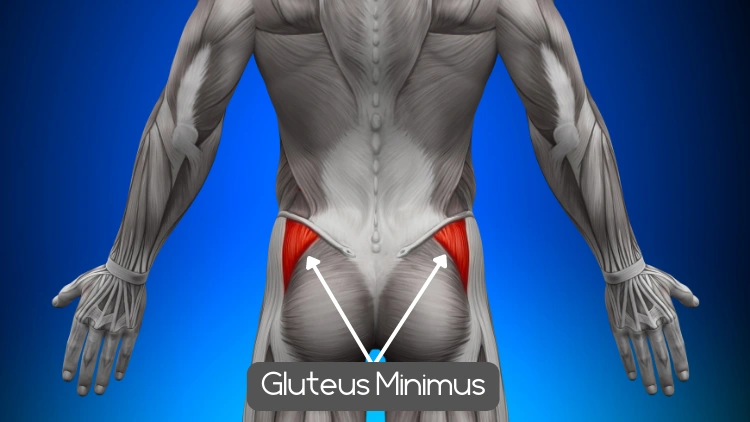
Source: decade3d via Canva.com5
The Gluteus (Gluteus Maximus)
The gluteus maximus, unlike the other glute muscles above, is a secondary muscle for hip abduction. This means that it only partially contributes to the movement.
The largest of the glute muscles is the gluteus maximus, so if you’re aiming for a bigger buttocks, you might have more success targeting this muscle with various exercises like a back squat workout.
Those lacking a squat rack can have luck with leg press variations. To determine the appropriate weight for a lifter, consider utilizing a leg press to squat conversion.
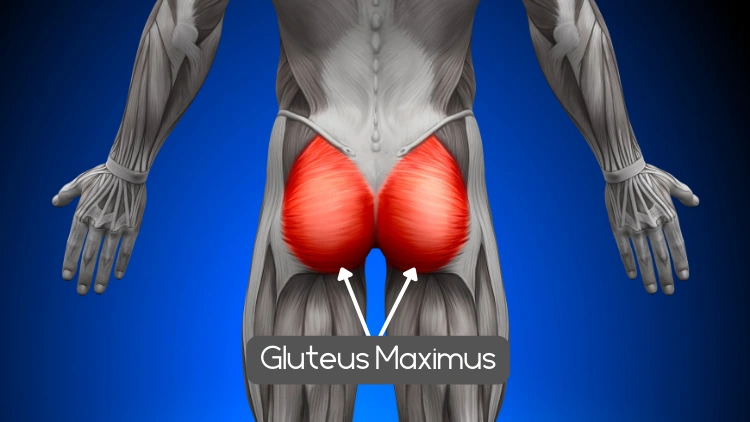
Source: decade3d via Canva.com6
Tensor Fasciae Latae (Hip Abduction)
The tensor fasciae latae, or sometimes abbreviated as TFL, is a muscle that runs on the outside of the leg from the hip to the knee. Like the muscles above, it is another primary mover for hip abduction.
This muscle is directly connected to the IT band, which is a thick band of fascia that runs along the same location. This fascia location can become very tight or cause pain in some people, particularly for runners.
However, this band of fascia can also become irritated through seated hip abduction as well.
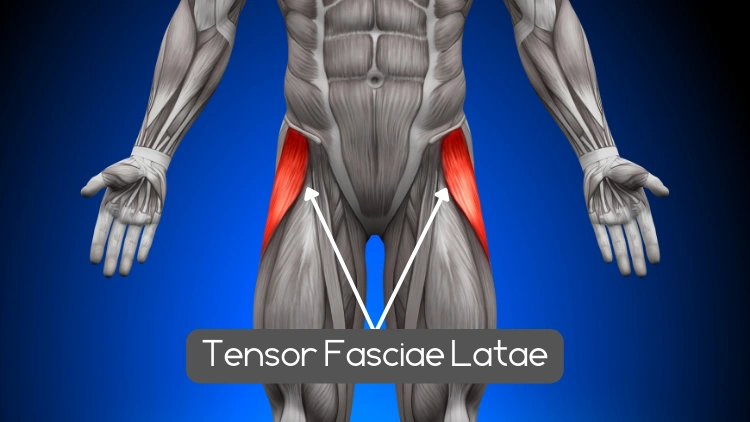
Source: decade3d via Canva.com7
Piriformis (Hip Abduction)
The piriformis is a small muscle that will help with hip abduction when the hip is flexed, or more simply put, when a person is bending forward at the hip joint. During machine hip abduction, the hips are flexed due to the seated position of the exercise. Therefore, this muscle will be activated.

Source: Science Photo Library via Canva.com8
Sartorius (Hip Abduction)
This muscle is also a secondary abductor muscle, and like the piriformis discussed above, will be slightly activated during hip abduction when the hip is flexed. It will not be activated if the hip is in extension, or if a person is engaging in a hip abduction exercise while in the standing position.
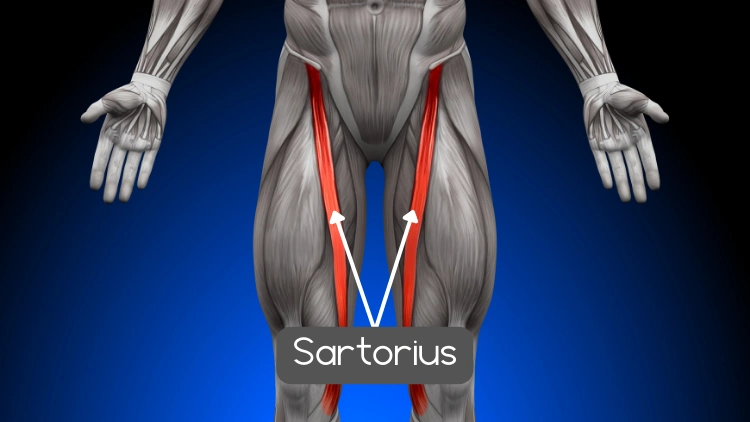
Source: decade3d via Canva.com9
Use Case & Potential Benefits of Hip Abduction Machines & Exercises
In general, no exercise is 100% bad or 100% good since there’s countless factors that play a role in how good or bad it is. With that in mind, let’s take a look at the benefits of the hip abduction machine.
Isolation of Muscles
For those wanting to focus slowly on the hip abduction, this machine will be alright to use because it will help to isolate the muscles that are being engaged. This in turn will limit any compensatory movement, or recruitment of other muscle groups to complete a movement, a person accidentally uses if otherwise.
Furthermore, it allows lifters to solely focus on the muscle rather than the balance and coordination factors that might play a role in other hip abduction exercise variations.
Rehabilitation
Targeting the hip improves a person’s functionality, mobility, and health outcomes. Research suggests that following a stroke, use of a hip abduction exercises like the hip abduction and adduction machine can significantly strengthen the muscles to improve balance, coordination, and weight bearing.10
So while the hip machine might not be ideal for all lifters, it is ideal to help those who have had ailments get back on track.
Usability
Not everyone might have the ability to complete standing exercises, such as cabled hip abduction. Alternatively, not everyone is able to get all the way down to the floor for the floor abduction variations either.
This might be due to a multitude of factors such as previous injury, muscle sprain, broken bones, or excessive weight.
In this situation, the seated hip abduction machine might be ideal to use because it allows a lifter to engage and build the muscles that they might not otherwise be able to target. This can be especially useful in the rehabbing setting.
The Disadvantage of Hip Abduction Machines & Why Hip Abduction Is the Worst Exercise Possible
There are many reasons why the hip abduction machine might be the worst exercise possible. Readers are encouraged to take the information below into consideration before using the seated hip abduction exercise in their workout routine.
Don’t be afraid to try a abduction variation exercise detailed further below for a better option.
Aesthetics
When it comes to the hip abduction machine muscles worked, it’s important to consider the physique a lifter is going for before using this exercise. Because some of the hip abduction muscles are attached near the narrowest part of the waist, doing seated hip abduction can lead to a person building muscle around that portion of the body.
Unfortunately, this can lead to the development of a wider looking waist and can ruin a person’s proportions. This is especially frustrating for both male and female lifters who are working hard to achieve a narrow waist for a V shape or hourglass figure.
Functionality
The best exercises use a functional movement, or a movement that tends to be utilized every day by a person. Functional movements consist of the natural way a body moves, and are less likely to cause injury to the person doing the exercise.
Ultimately, functional exercise will lead to improvements in strength and endurance in everyday life.
Seated hip abduction machines, which involves a lifter sitting down and pushing their legs outward is not a typical movement that the body normally completes. Therefore, it will not have the benefits of functional movements.
Pain & Injury
The tensor fasciae latae and connecting IT band can be prone to injury during seated hip abduction exercise. This muscle already has a tendency of being tight on the human body due to a person’s anatomical structure, and can easily become inflamed.
Overuse can lead to IT band syndrome and as a result of inflammation, a person can develop tightness, pain, swelling, and even tearing of the IT band itself.11 This will also result in the weakening of the hip and knee joints, which are dependent on this band of fascia for stability.
Hip Abduction vs Hip Adduction (Hip Abduction Machine vs Hip Adductor Machine)
When it comes to hip abduction and hip adduction, there are many differences. Continue reading to delve into a comprehensive analysis detailing exactly what these exercises entail, alongside a comparison of the muscle groups targeted by the hip adduction and hip abduction machines.
If you’re aiming to incorporate abduction and adduction into your workout routine, both exercises can seamlessly integrate into a 4 day workout split featuring functional exercises.
What’s The Difference Between Hip ABDuction & ADDuction
Hip abduction and hip adduction may sound similar, but they actually do the opposite movement. While hip abduction moves the leg away from the body, hip adduction is responsible for moving the leg towards the body and closer to midline.
Hip abduction is typically a more popular exercise to incorporate, as the goal of many lifters is to build the size and shape of the butt outwards. This, in theory, creates the appearance of a smaller waist. But remember, that might now always be the case.
Alternatively, lifters might use adduction to strengthen and tone the adductor muscles, typically located on the inside of the thigh. It’s important when doing one exercise to include the other, in order to help balance the muscles and prevent injury.
Muscles Targeted by the Hip Abduction Machine Versus the Hip Adduction Machine
Hip abduction and hip adduction are different, and as a result, will have totally different muscles worked. Below are the main differences that a lifter should know.
Keep in mind that hip abduction works by moving the leg away from midline, or the center of the body. This would be considered a lateral movement.
Muscles Worked by the Hip Abduction Machine
- Glutes (Maximus, Medius, Minimus)
- Tensor Fasciae Latae
- Piriformis
- Sartorius
Hip adduction is critical for both stability and movement of the hip itself.12 Adduction is completed by moving the leg towards the midline, or center of the body.
Hip adductor machine exercises will use this movement to target the adductor muscles.
Hip Adduction Machine Muscles Worked
- Adductor Longus
- Adductor Brevis
- Adductor Magnus
- Gracilis
- Pectineus
Hip Abduction Exercises (Machines, Bands & Beyond)
Below is a list of exercises that will target hip abduction specifically. This will include machines, bands, and even body weight variations.
Readers are encouraged to use one of the alternatives to the hip abduction machine listed below.

Source: Polina Tankilevitch via Canva.com13
Remember, hip abduction for glutes is a great way to target and build the butt and can be used to achieve a larger and stronger posterior.
Hip Abduction Machine
Let’s review the hip abduction, or hip flexor machine, first. This requires a seated position, with the outside of the knees resting against the machine pads and hands holding onto handlebars.
To complete this exercise, a lifter will push their legs and away from the body to complete abduction.
Remember this leg abductor machine is what is considered the worst exercise possible, and should be avoided unless under special circumstances!
Here’s an example:
Seated Hip Abduction With Band
This exercise is straightforward and focuses on the same muscles as those targeted by the hip abduction machine.
Simply sit in an ergonomic 90-90-90 position, with a taut band placed above the knees. Next, a person will abduct the legs by spreading the knees apart as wide as possible before returning them back to midline.
Complete as many as desired.
Here’s what a seated hip abduction looks like:
Cable Hip Abduction
This is a standing abduction exercise using a cable machine and ankle cuff. Lifters should place their feet shoulder width apart with some tension at the cable.
Next, they will slowly complete abduction by moving their leg away from the body to their full range of motion, and then return to their starting position. Lifters should complete the amount of reps on one leg before switching to the other.
Here’s an example of the exercise:
Standing Hip Abduction With Band
This exercise involves standing with feet shoulder length apart with a tight band placed above the knees. With hands on hips, a lifter will shift their weight to one leg and use the other to complete a full abduction movement before returning to their start position.
Alternatively, a person can do this exercise without a band if wanting to target coordination.
Here an example of the movement:
Lying Hip Abduction
Research suggests that this exercise primarily targets the gluteus medius more than any other muscle.14 This abduction exercise involves laying on the side and can be completed with or without a band.
From this position, a lifter will simply raise one leg up towards the ceiling to their full range of motion. This will be away from the body, otherwise known as the abduction movement.
They will then return to their starting position.
Here is an example:
Fire Hydrants
This abduction exercise can be used with or without a band for resistance. It targets the abductors of the leg, making it a good machine alternative.
This exercise is completed on all fours, or the quadruped position. Knees and palms are firmly on the ground to support the exerciser’s body.
To do this exercise, a lifter will lift one leg out to the side while their knee is angled at roughly 90 degrees. With a tight core, they will then lower their leg to the start position.
Alternating legs or same legs can be completed throughout the set.
Here is what the exercise looks like:
Do These Functional Exercises for a Bigger Butt Instead of Hip Abduction Machines
Below are functional exercises that will help a lifter to build a bigger butt, as well as target the hip abduction muscles. These are all great alternatives to use to the hip abduction machine!
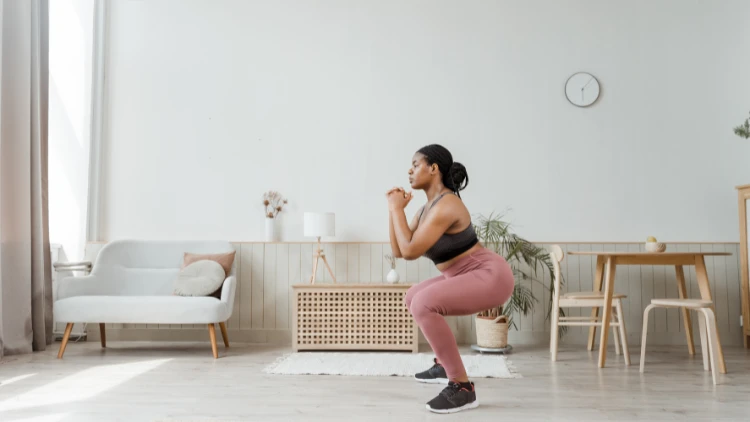
Source: MART PRODUCTION via Canva.com15
Deadlifts
Deadlifts, similar to squats, are a functional and compound exercise that help to build the butt while also targeting some of the muscles involved in abduction.
When starting a deadlift workout, lifters should begin with their feet shoulder-width apart and their toes angled slightly outward.
Once in the correct position, the lifter can then place their hands on the barbell using an overhand grip with palms downward. Slightly bend the knees to grasp the bar with a straight back.
Next, a lifter should lift the weight and extend the hips for a standing position. Slowly, they will then flex their hips and lower the bar to the starting position.
Here is an example of how deadlifts should be done:
RDLs
Romanian Deadlifts, often abbreviated as RDLs, closely resemble conventional deadlifts and serve as an excellent stiff leg deadlift alternative. They set up and form will look about the same, with one key difference.
For RDLs, a lifter will use both the hip and knee extension to pick up their weight. Furthermore, a lighter should stop the exercise with their weight at about shin height rather than the full range of motion.
This will better target the glutes and hamstring muscles.
Here’s how RDLs should be done:
Squats
Squats are ideal when it comes to muscle building, and will target many of the abductor muscles such as all three muscles of the glutes. They have the additional benefit of being both a functional exercise and a compound movement, meaning the muscles involved cross multiple joints.
Compound movements have been shown to significantly increase muscle strength.16
To squat, simply bend at the knees until the thighs are roughly parallel to the ground. Try to keep the chest facing outwards and keep feet shoulder length apart.
Muscle building benefits are abundant with back squats and can be seamlessly integrated into any workout routine.
Here is an example of squatting:
Split Squat
This functional exercise effectively targets the upper glutes while also engaging the muscles involved in abduction, making it an excellent upper glute workout. It can be completed with the lagging foot placed on the floor, or on an elevated surface.
To complete a split squat, a person will place one foot behind the other, to the point where both knees are bent at 90 degrees. From this position, a person will slowly raise upwards and downwards to complete a single set.
This exercise can be completed with just body weight or dumbbells to aid in muscle growth, strength, and endurance.
Here’s a video of a person doing split squats:
Lunges
Lunges are ideal when it comes to building the butt muscles. They have a number of variations, including walking, reverse, and single leg lunges.
When it comes to the standard forward lunge, the hamstrings will be targeted in addition to the glute muscles.17
In order to do a single leg lunge, a lifter will simply step forward and lower their knee until their thigh is roughly parallel to the ground. Next, they will push backwards to return to the starting position.
They will repeat the movement with the other leg and continue until the number of reps desired is completed.
Don’t be afraid to try a variation discussed above to target the hip abduction machine muscles worked. If there’s one thing readers should remember from this article, it’s that the hip abduction machine is among the least effective exercises. Instead, focusing on more functional exercises can better enhance muscle building, prevent injuries, and improve overall physique.
References
1Kzenon. Canva. Accessed 20 April 2023. <https://www.canva.com/photos/MACVqiBHwME-woman-sitting-at-the-abductor-machine/>
2Piacquadio, Andrea. Canva. Accessed 20 April 2023. <https://www.canva.com/photos/MAD7MLpQu3I-woman-working-out/>
3Macadam, P., Cronin, J., & Contreras, B. (2015). AN EXAMINATION OF THE GLUTEAL MUSCLE ACTIVITY ASSOCIATED WITH DYNAMIC HIP ABDUCTION AND HIP EXTERNAL ROTATION EXERCISE: A SYSTEMATIC REVIEW. International journal of sports physical therapy, 10(5), 573–591. <https://pubmed.ncbi.nlm.nih.gov/26491608/>
4decade3d. Canva, <https://www.canva.com/photos/MAC_U4VEw9o-glutes-medius-anatomy-muscles/>
5decade3d. Canva. Accessed 20 April 2023. <https://www.canva.com/photos/MADerAJvWMU-gluteus-minimus-anatomy-muscles/>
6decade3d. Canva. Accessed 20 April 2023. <https://www.canva.com/photos/MADerAJvWMU-gluteus-maximus-anatomy-muscles/>
7decade3d. Canva. Accessed 20 April 2023. <https://www.canva.com/photos/MAC_wFp8vR8-tensor-fasciae-latea-anatomy-muscles/>
8Science Photo Library. Canva. Accessed 20 April 2023. <https://www.canva.com/photos/MADq3tStGZM-f017-1273/>
9decade3d. Canva. Accessed 20 April 2023. <https://www.canva.com/photos/MAC_U9yMgSg-sartorius-anatomy-muscles/>
10Mercer, V. S., Chang, S. H., Williams, C. D., Noble, K., & Vance, A. W. (2009). Effects of an exercise program to increase hip abductor muscle strength and improve lateral stability following stroke: a single subject design. Journal of geriatric physical therapy (2001), 32(2), 50–59. <https://pubmed.ncbi.nlm.nih.gov/20039583/>
11Strauss, E. J., Kim, S., Calcei, J. G., & Park, D. (2011). Iliotibial band syndrome: evaluation and management. The Journal of the American Academy of Orthopaedic Surgeons, 19(12), 728–736. <https://doi.org/10.5435/00124635-201112000-00003>
12Hrysomallis C. (2009). Hip adductors’ strength, flexibility, and injury risk. Journal of strength and conditioning research, 23(5), 1514–1517. <https://doi.org/10.1519/JSC.0b013e3181a3c6c4>
13Tankilevitch, Polina. Canva. Accessed 20 April 2023. <https://www.canva.com/photos/MAETbQbeumM-people-workout-using-resistance-bands/>
14McBeth, J. M., Earl-Boehm, J. E., Cobb, S. C., & Huddleston, W. E. (2012). Hip muscle activity during 3 side-lying hip-strengthening exercises in distance runners. Journal of athletic training, 47(1), 15–23. <https://doi.org/10.4085/1062-6050-47.1.15>
15MART PRODUCTION. Canva. Accessed 20 April 2023. <https://www.canva.com/photos/MAEk1-PjUxA-a-woman-doing-squats-at-home/>
16Paoli, A., Gentil, P., Moro, T., Marcolin, G., & Bianco, A. (2017). Resistance Training with Single vs. Multi-joint Exercises at Equal Total Load Volume: Effects on Body Composition, Cardiorespiratory Fitness, and Muscle Strength. Frontiers in physiology, 8, 1105. <https://doi.org/10.3389/fphys.2017.01105>
17Jönhagen, S., Ackermann, P., & Saartok, T. (2009). Forward lunge: a training study of eccentric exercises of the lower limbs. Journal of strength and conditioning research, 23(3), 972–978. <https://doi.org/10.1519/JSC.0b013e3181a00d98>